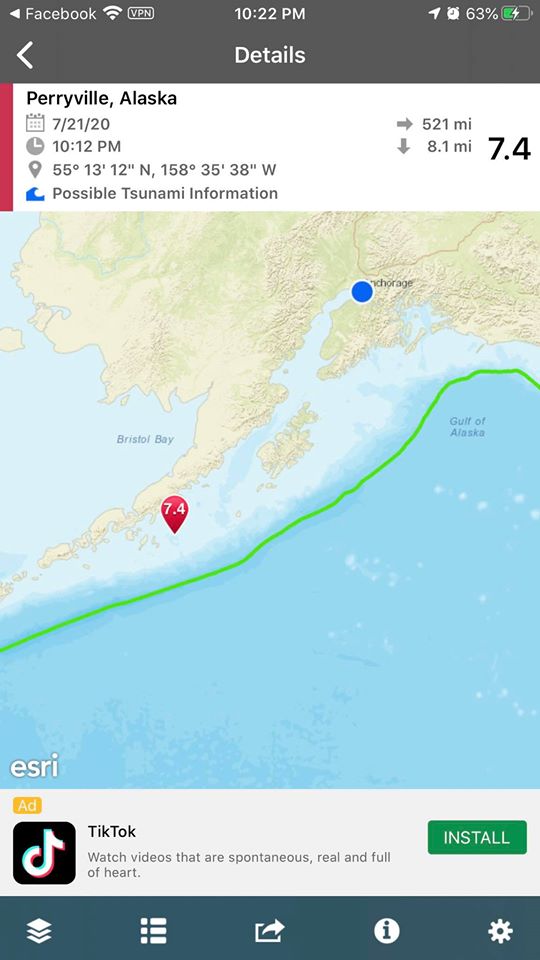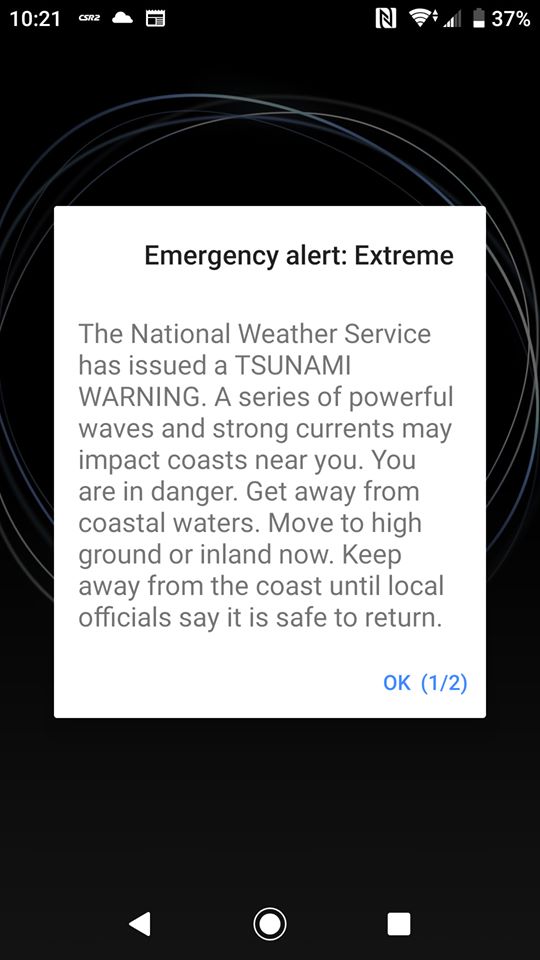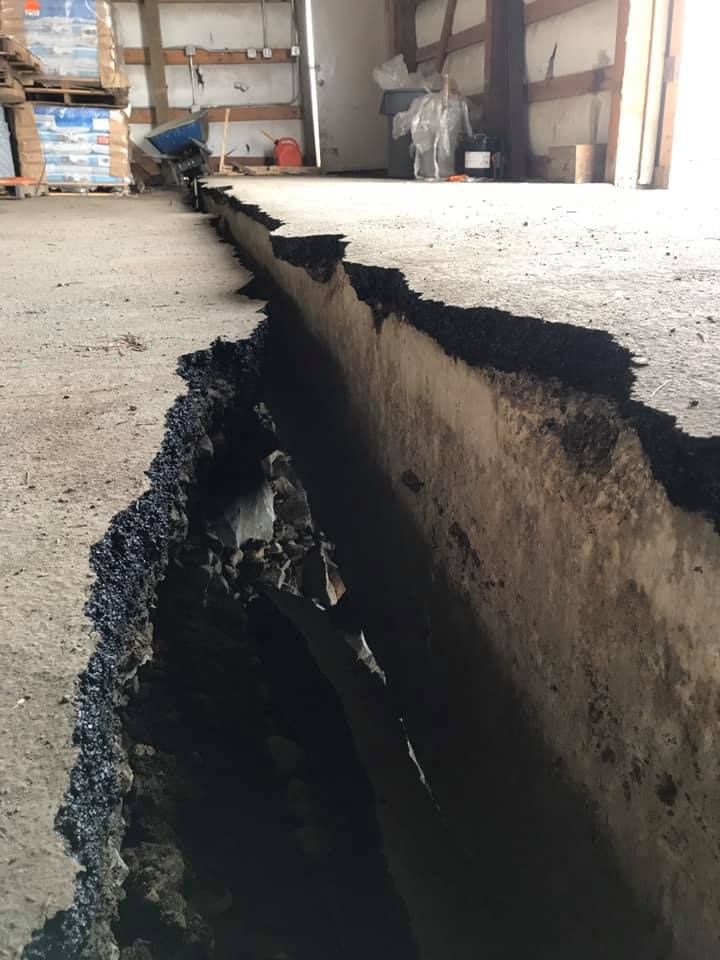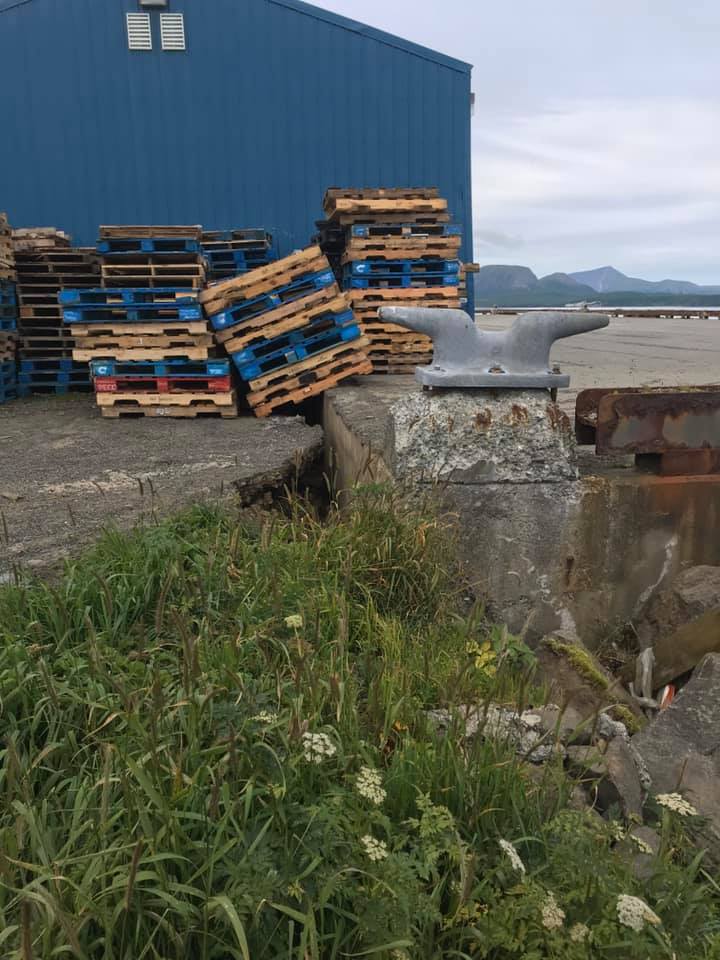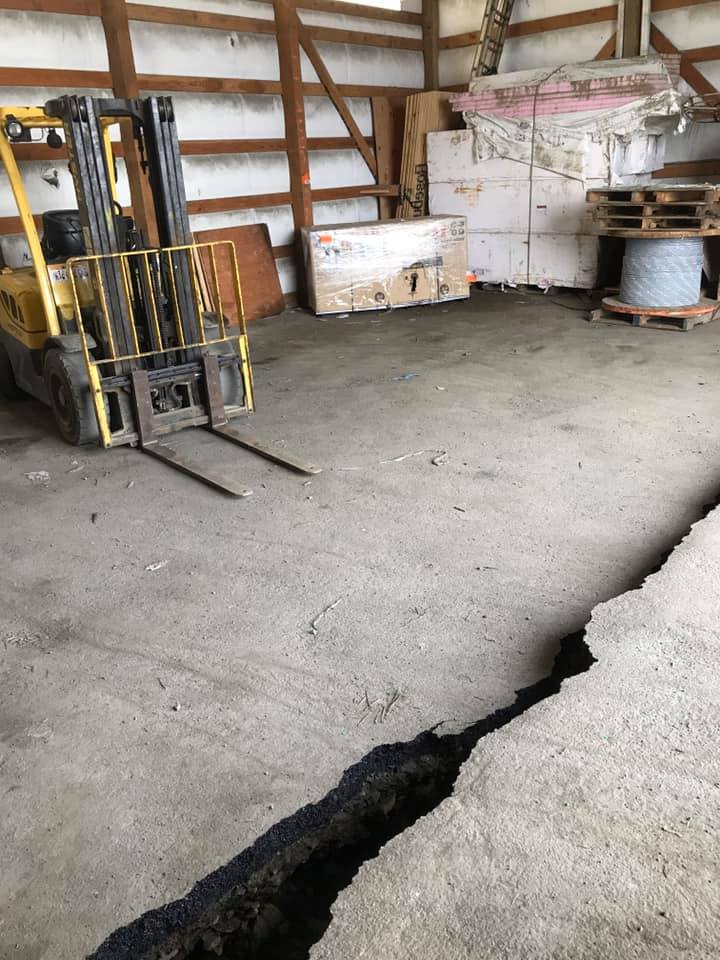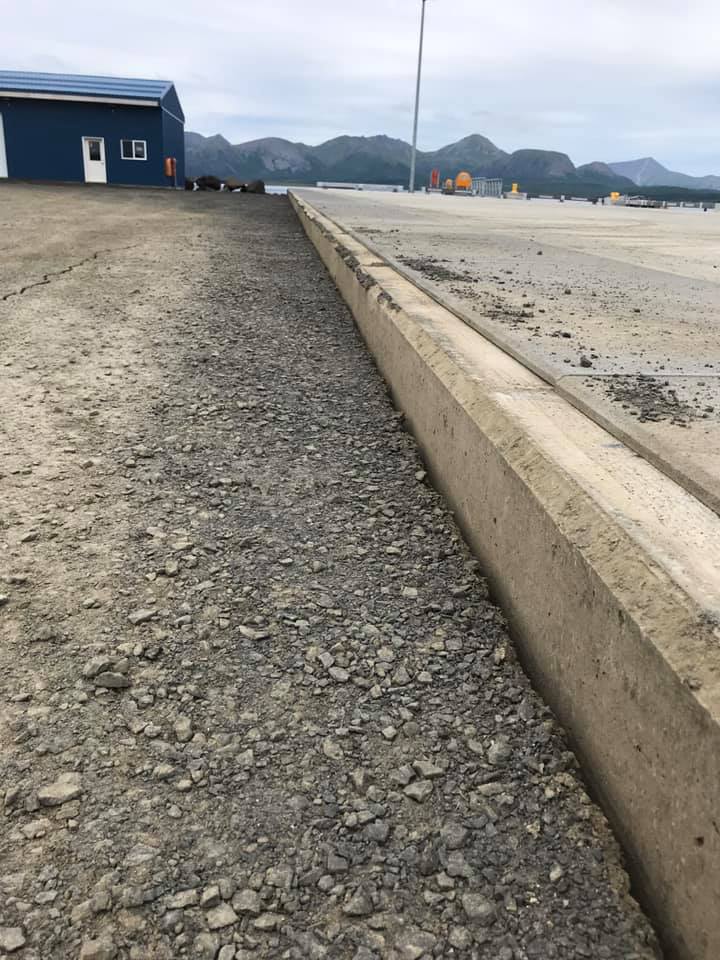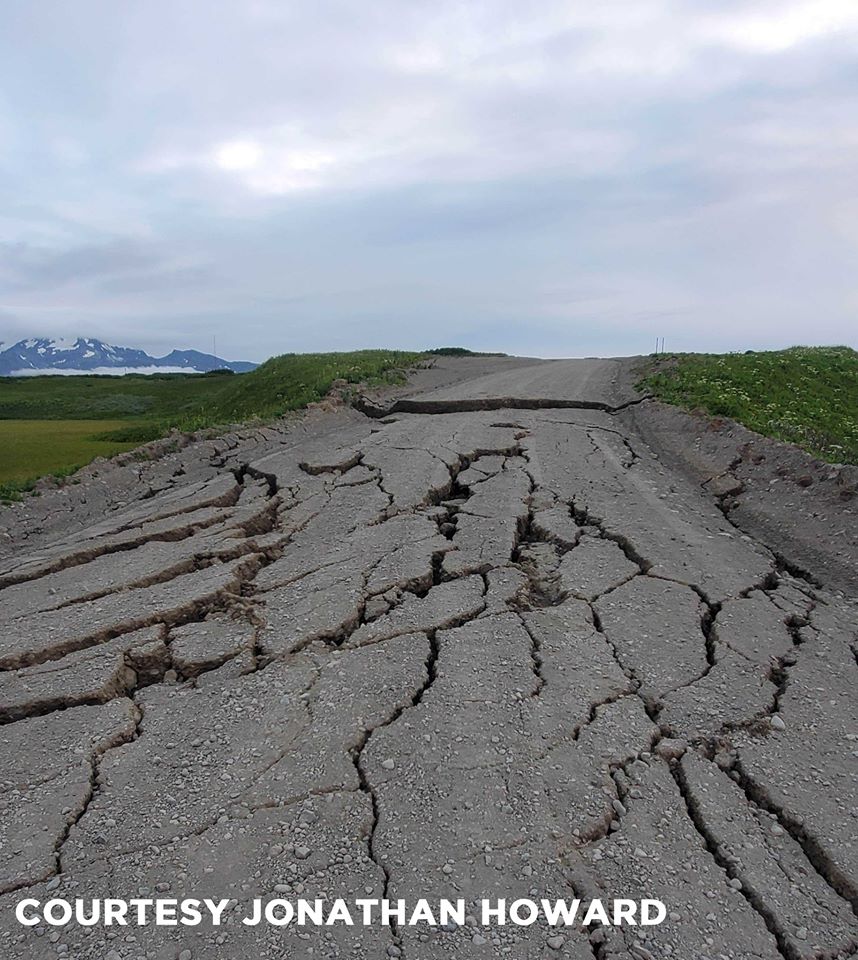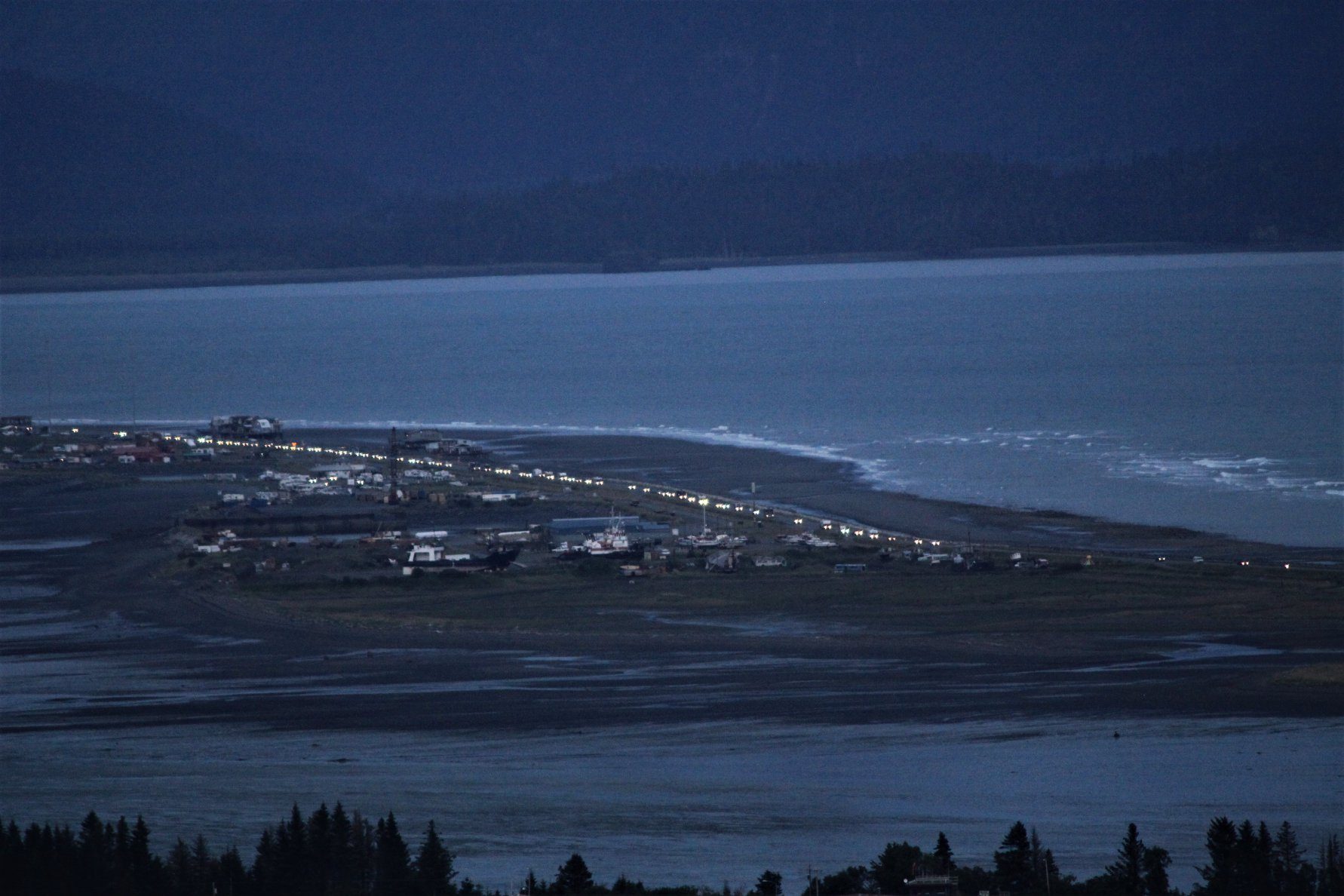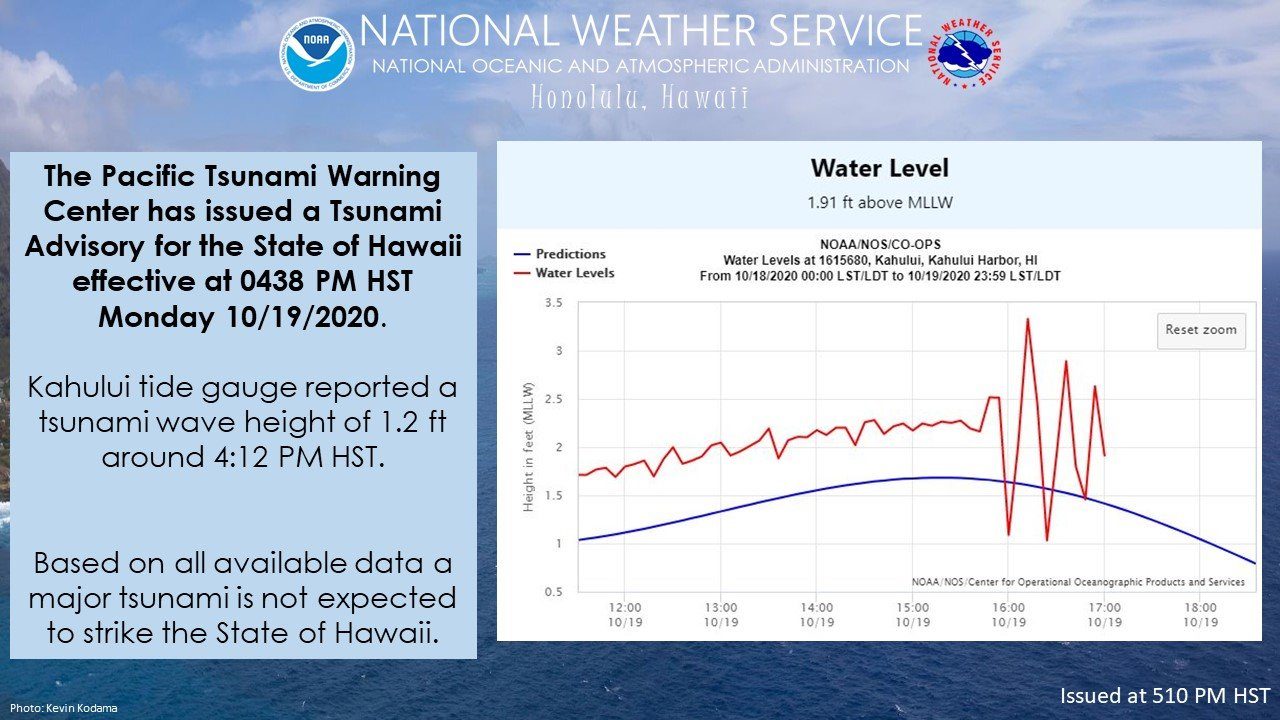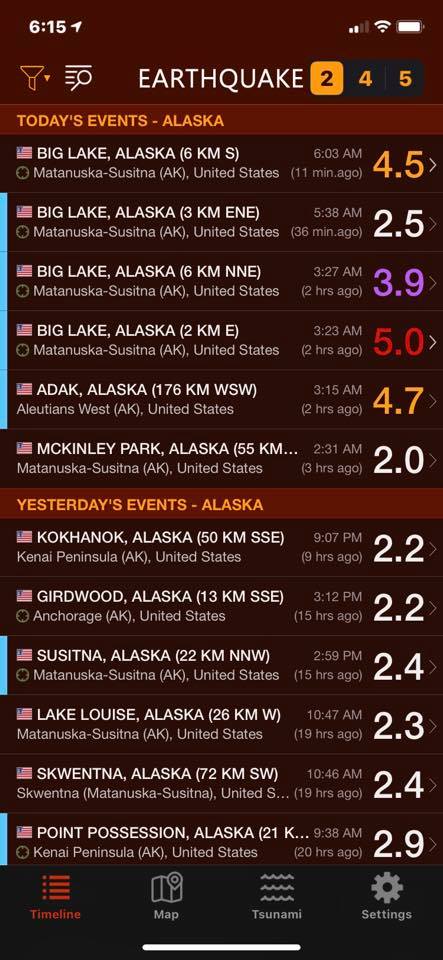Following up on
@R1600Turbo
Tectonic Summary
The October 19, 2020, M 7.5 earthquake southeast of Sand Point, Alaska (south of the Alaska Peninsula), occurred as the result of strike-slip faulting near the subduction zone interface between the Pacific and North America plates, either within the upper (North America) Plate or within the downgoing (Pacific) slab. The preliminary focal mechanism solution indicates rupture occurred on either a moderately dipping right-lateral strike-slip fault striking towards the NNW or on a steeply dipping left-lateral strike-slip fault striking towards the east, and therefore that this earthquake was not a thrust event on the plate interface itself. At the location of this event, the Pacific plate converges with North America to the northwest at a rate of about 64 mm/yr, subducting at the Alaska-Aleutian Trench 100 km to the southeast of the earthquake. This event is an aftershock of the M 7.8 earthquake that occurred on July 22, 2020.
While commonly plotted as points on maps, earthquakes of this size are more appropriately described as slip over a larger fault area. Strike slip faulting events of the size of the October 19, 2020 earthquake are typically about 130x25 km (length x width).
Large earthquakes are common in the Alaska-Aleutian subduction zone. Since 1900, 8 other earthquakes M7 and larger have occurred within 250 km of the October 19, 2020 event, including the July 22, 2020 M 7.8 mainshock of this sequence. An updated aftershock forecast for the July 22, 2020 M 7.8 sequence, that includes the occurrence of this October 19th, 2020 earthquake, can be found
here. The largest of these was a M8.6 earthquake on April 1, 1946, which generated a large tsunami that caused destruction and loss of life both locally on Unimak Island and more distantly at Hilo, Hawaii. The Alaska-Aleutian Trench also hosted the second largest earthquake recorded by modern seismic instrumentation, the M9.2 March 27, 1964 earthquake, which ruptured to within about 350 km of this event.
The majority of large earthquakes in this area are thrust events on the plate interface, unlike the strike-slip event of October 19, 2020. The stretch of the Alaska-Aleutian subduction zone beneath the Shumagin Islands has not ruptured in a historical great (M>8) earthquake. This observation led to definition of the ‘Shumagin Gap’ in the context of seismic gap theory, which proposes that fault sections that have not slipped for the longest elapsed time will be the site of future earthquakes. The interpretation that the Shumagin Gap can host extremely large earthquakes is clouded by 1) geodetic observations, which show that the Shumagin Islands and neighboring Sanak Island are above a section of the subduction interface that is very poorly coupled and storing very little elastic strain; and 2) geologic observations, which have documented little land level change and tsunami inundation since ~3,000 years ago on Simeonof Island in the Shumagins.



 Must have missed it.
Must have missed it.